Pearl of southern Italy: the best places to discover in Puglia (copy)

Find a different side of Italian life in this southeastern region, with its native food, endless beaches, varied architecture and sunny welcome.
With its wild landscapes, laidback ethos and traditions of paganism, Italy’s southern heel is a contrast to the fast-paced cosmopolitan cities of the north. Its distinct culture comes from its strategic location, which has brought everyone from the Greeks to the French to its shores.
The sunny climate, plentiful coastline and rich soil also mean that farming and fishing remain crucial to the economy and the long lunch prevails. Puglian food is famed for its inventive use of simple, seasonal produce like turnip greens, in a style known as ‘cucina povera’ (poor cuisine).
The long narrow peninsula has six provinces and borders the Adriatic and Ionian seas, allowing visitors to enjoy both beach and countryside. Puglia has a great selection of lively cities and laidback villages too, each with their own picture-perfect ‘centro storico’ (old town). Here are eight must-see spots on a trip to the region.
.png) Libero_Monterisi/Shutterstock
Libero_Monterisi/Shutterstock
Bari
There’s a buzz in the air in Bari, which has transformed itself from a down-at-heel port town to a cultural and foodie hotspot with a top-notch shopping district and three beaches as a bonus. At its heart is Bari Vecchio – the Old Town – a labyrinth of alleys, squares and architecturally stunning churches, where nonnas handcraft orecchiette pasta on the streets alongside kids kicking footballs.
Basilica di San Nicola is the crown jewel here. It's the resting place of the Christian saint thought to have inspired the story of Father Christmas – his bones were liberated from his native Turkey by Bari sailors in 1087. After a visit, grab a slice of the ultimate street food focaccia Barese and walk along the seafront promenade. You’ll pass the pink Teatro Margherita, the vibrant blue boats in the old harbour and the grand Liberty-style buildings that line the road.
READ MORE: 12 Mediterranean islands where you can escape the crowds
Locals flock to the streets once the sun starts to set, feasting on seafood and sipping spritzes. You’ll find the squares alive until the early hours, with Piazza Mercantile the best place to be. If you can manage an early start, don’t miss seeing fisherman selling their catch and tenderising octopus on the seafront.
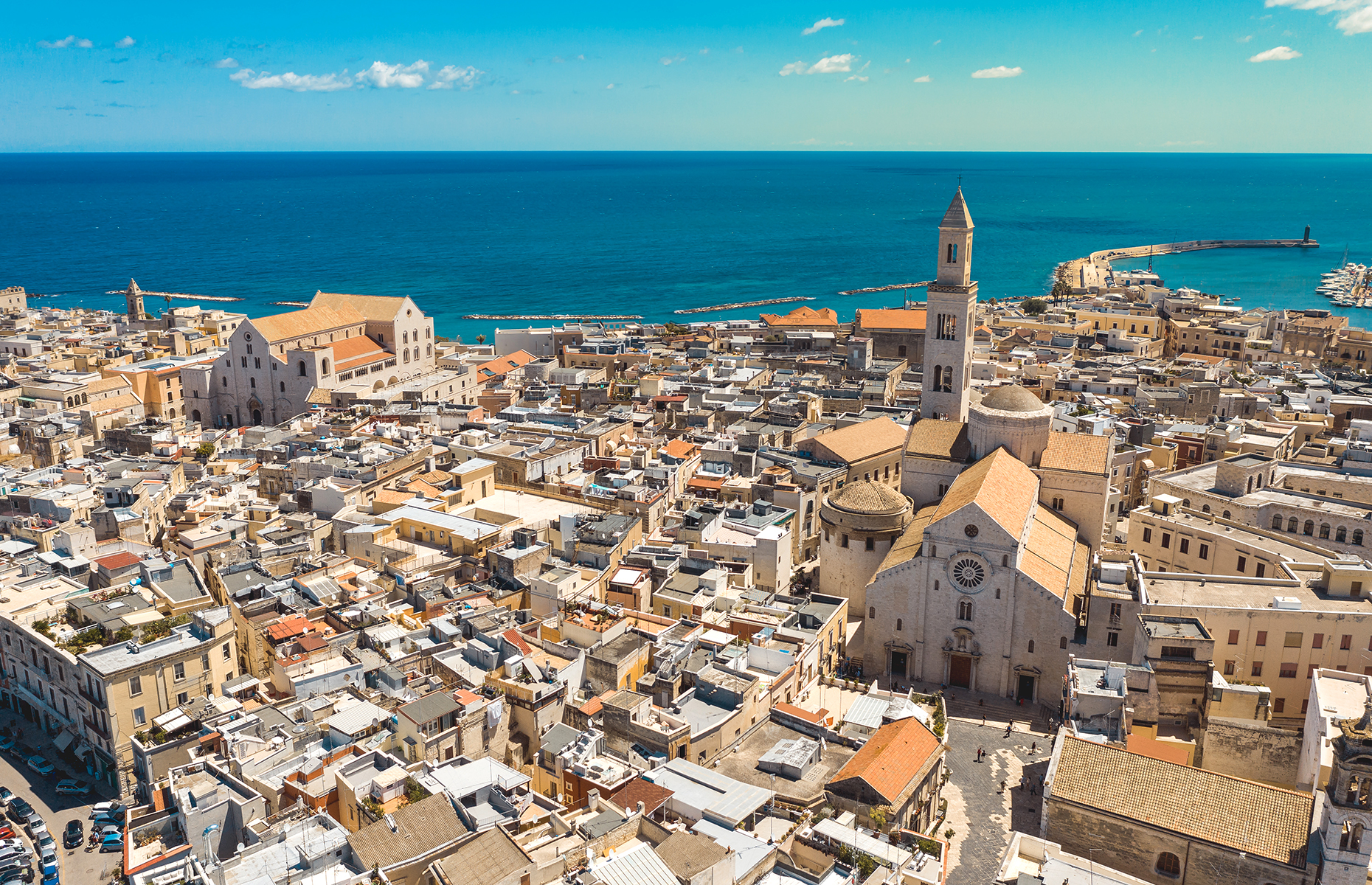 Fabio Dell/Shutterstock
Fabio Dell/Shutterstock
Lecce
This glamorous university city is known as 'the Florence of the south' thanks to its golden sandstone architecture and squares lined with wine bars. But Lecce is no copycat wannabe. Its ornate Baroque façades are so unique they have their own classification (barocco leccese).
Basilica di Santa Croce (pictured) exemplifies the local style and the stonemasons who crafted its façade were clearly of the opinion that ‘more is more’, given its abundance of cherubs, birds and horses. Its creation came at a price, however – and next to it is Museo Ebraico, which charts the city’s Jewish history, including the eviction of the community to erect the cathedral.
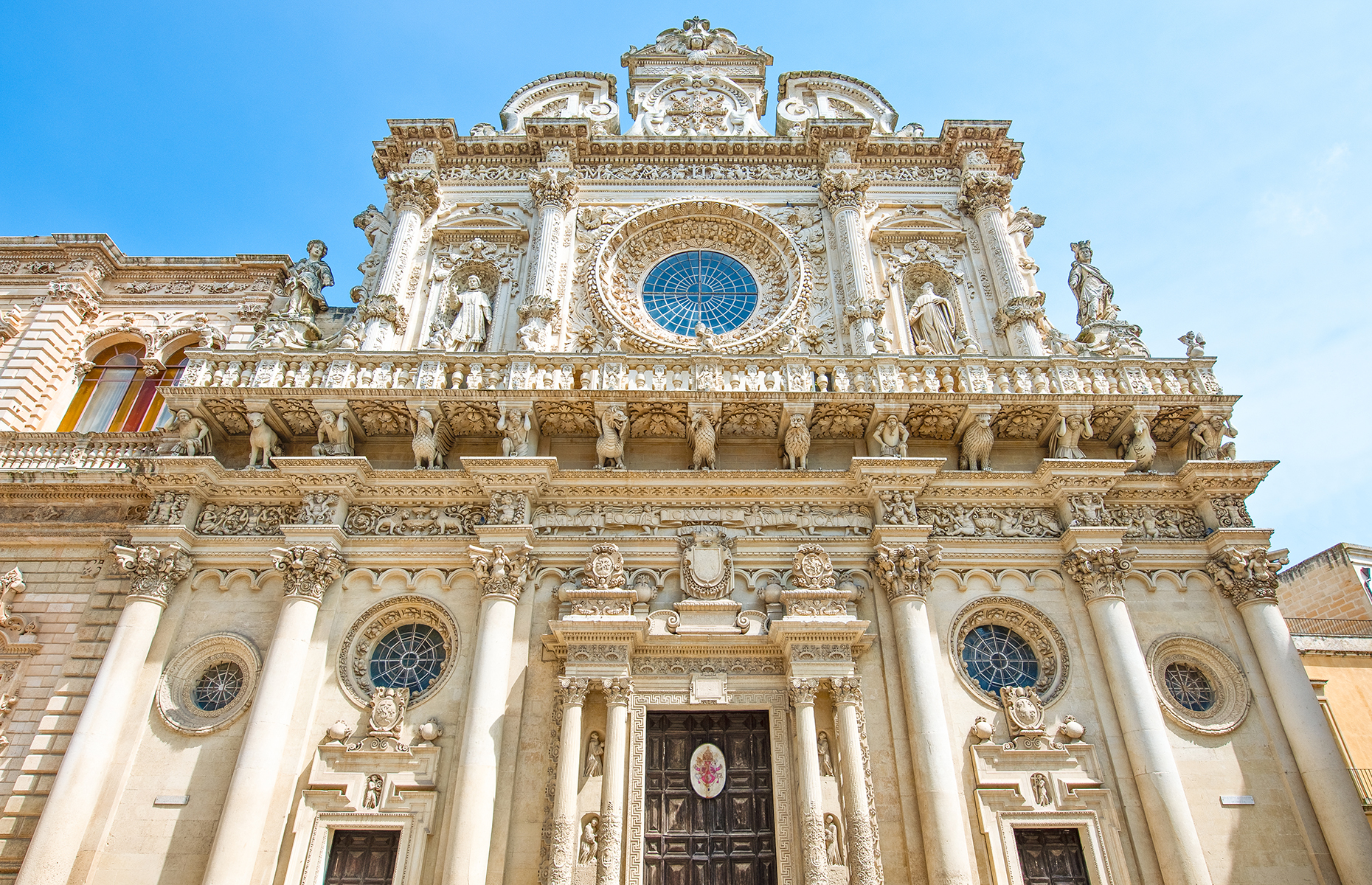 Gimas/Shutterstock
Gimas/Shutterstock
In the vast Piazza Sant’Oronzo you can spy a Roman amphitheatre which once held 14,000 spectators and continues to host cultural events. Afterwards, try the local drink of choice, an alvino (almond latte) and visit a papier-mache workshop or even try a class. This craft, also known as cartapesta, was elevated to a skilled artform by Lecce barbers in the 17th century in order to create exquisite religious statues.
Ostuni
Puglia’s striking La Citta Bianca (the White City), perched on three hills overlooking olive groves and the Adriatic, has the air of a Greek village with its snowy walls and abundant bougainvilla. But Ostuni actually owes its architecture to Spanish settlers, while the distinctive limewash was applied for practical rather than aesthetic reasons – to clean houses in efforts to combat the Black Plague.
The cobbled streets and staircases are steeped in the town’s history, from the colour-coded doors to signify the jobs of residents to the soaring column of Sant’Oronzo, who's believed to have saved the city from famine. The Gothic Concattedrale di Santa Maria Assunta is especially beautiful, with a large, glass-free rose window.
Explore the steep and winding medieval lanes with a guided tour by Ostuni Touring; you'll travel in an Ape Calessino, Italy’s take on a tuk tuk. The nearby coastline should also be enjoyed – it offers 12 miles (20km) of beach, dunes and clear waters, punctuated by campsites, restaurants and bars.
READ MORE: Italian dreams – which Amalfi Coast resort suits you?
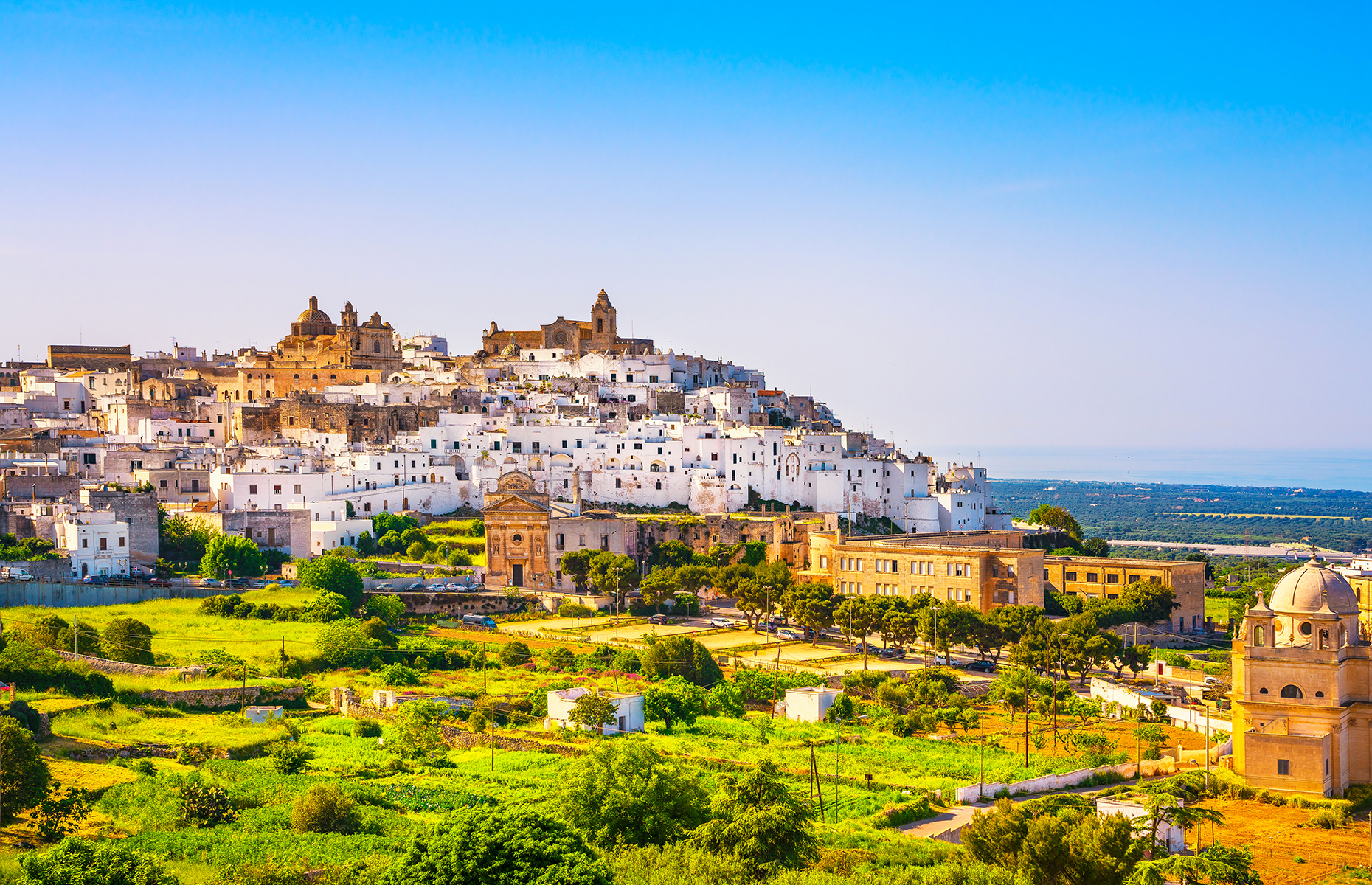 StevanZZ/Shutterstock
StevanZZ/Shutterstock
Brindisi
With its large natural harbour, Brindisi became a key Italian port in Roman times. This proud maritime heritage runs through Puglia’s second city, which is home to top sailing competitions and overlooked by Monumento al Marinaio d’Italia (The Italian Sailor Monument, pictured). It was built in 1933 to commemorate men lost at sea in the First World War; nicknamed The Rudder by locals, it's become a symbol of local pride.
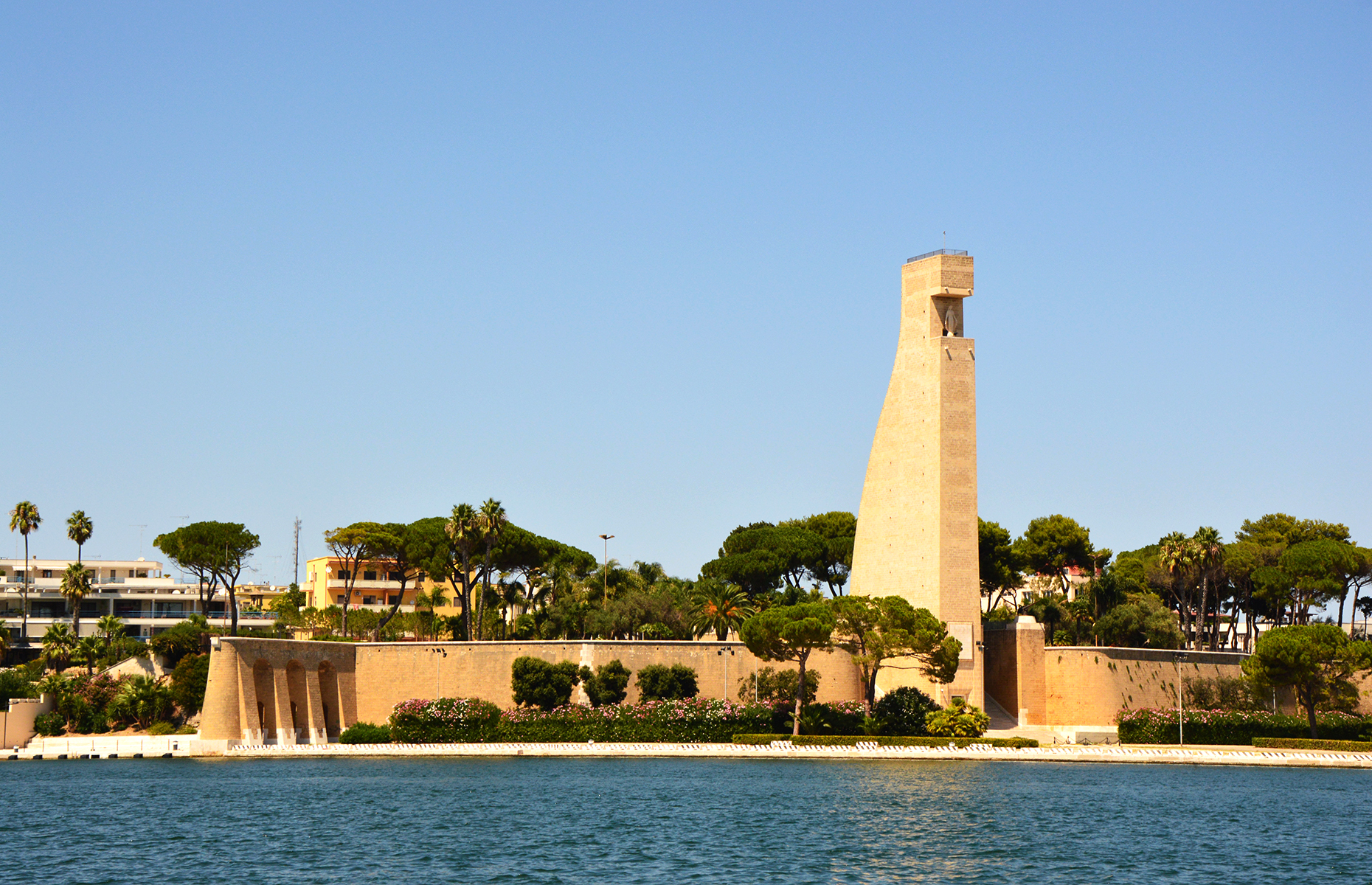 Zigres/Shutterstock
Zigres/Shutterstock
You can soak up the port’s atmosphere by strolling palm tree-lined Corso Garibaldi, where handsome buildings and wooden fishing boats sit alongside bustling bars. It’s a good spot to enjoy some seafood and the frozen dessert spumone, made from layers of ice cream, fruit and nuts.
Brindisi has plenty more history to explore too. There’s a Roman column and stairs that mark the end of the famous Appian Way, two castles and Chiesa di Santa Maria del Casale, a national monument since 1875. The church, which sits near Brindisi Airport, has an unusual patterned façade made from two local stones.
Valle D’Itria
A patchwork of green vineyards, silvery olive groves and golden durum wheat, punctuated with red poppies, this inland area is literally and figuratively at the heart of Puglia. It’s home to the famed trullo farmhouses – whitewashed stone structures with cone-shaped tiled roofs.
The towns and villages of Valle D’Itria each have their own special stories and charm – and you could spend a happy week idling from one to the other, visiting the markets and enjoying the café culture. The UNESCO World Heritage Site of Alberobello (pictured) is the most celebrated and busy, with a collection of 1,500 trulli at its centre.
 thegrimfandango/Shutterstock
thegrimfandango/Shutterstock
In Locorotondo (so-called because of its circular layout) you can explore cool alleyways and take in views across the vineyards that produce its local white wine, while Cisternino has lots of hidden corners where you can eat at ‘fornelli’, a butcher combined with a grill house. Martina Franca is bigger, with chic squares like Piazza Plebiscito, backdrop to the ornate Basilica di San Martino. It’s also famed for its capocollo cured meat.
Otranto
Otranto is Italy’s most easterly town and its seafront is one of the most charming, with white sandy beaches, turquoise waters and a harbour for swimming and sunbathing. By day you can take part in water sports and boat trips to the sea caves lining the coast of Puglia’s southernly tip. By night, the promenade's bars and restaurants come to life.
The Centro Storico is a winding network of shops and eateries, leading up towards a quiet piazza where a fine Romanesque cathedral sits. It has a distinct interior style, including a vast floor mosaic starring everyone from Adam to King Arthur, a carved wooden ceiling and the Capella Mortiri – a set of glass cases containing the skulls of 813 martyrs slaughtered by Ottoman invaders.
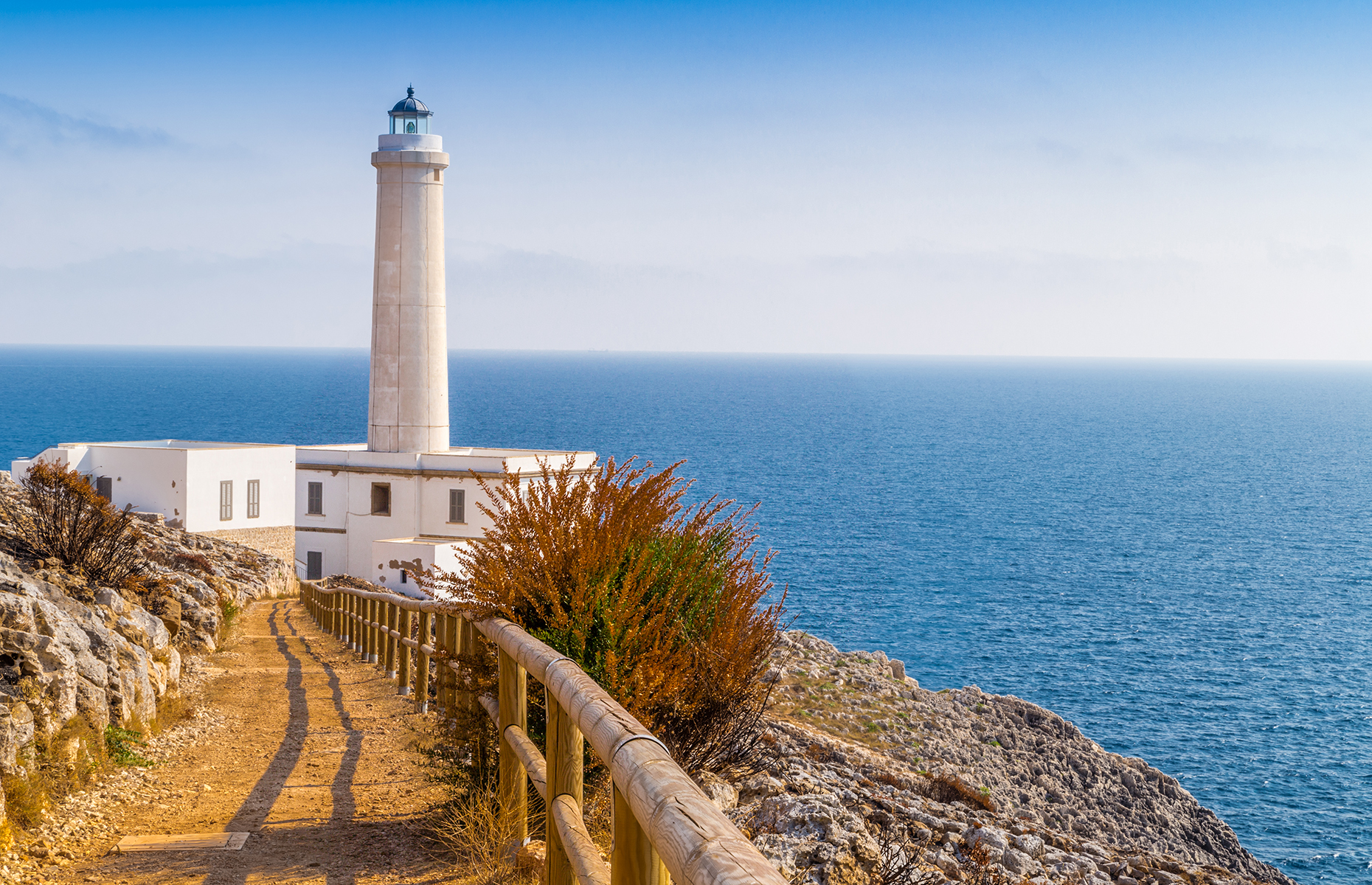 Vivida Photo PC/Shutterstock
Vivida Photo PC/Shutterstock
This tragedy led to the building of nearby Castello Aragonese in the 15th century – the five-sided, moated fortress has spectacular views from its ramparts, even across to Albania on a clear day. Adventurous types can also hike to Punta Palascia Lighthouse (pictured) or Cava di Bauxite, a disused quarry with an emerald green lake and rich red rocks.
Taranto
The ancient city of Taranto has been a hub of human life for millenia, founded by the Spartans and conquered by almost everyone else since. It's known as 'the city of two seas' as it lies between two bodies of water – the Mar Grande (Big Sea), its bay on the Ionian Sea, and the Mar Piccolo (Little Sea), a semi-enclosed coastal basin.
READ MORE: Rock star – what to see in Matera, Italy
The Citta Vecchia (Old City) lies on an island between the two, connected to the mainland by a swivelling steel bridge known as Ponte Girevole, built in 1887. Few people reside on its centuries-old streets today, but an ambitious regeneration is underway, with city authorities selling homes for a euro on the condition that new owners renovate them. It might be quiet but there is plenty to see, including the impressive 15th-century Castel San Angelo, an ornate cathedral and an underground museum charting local Spartan history.
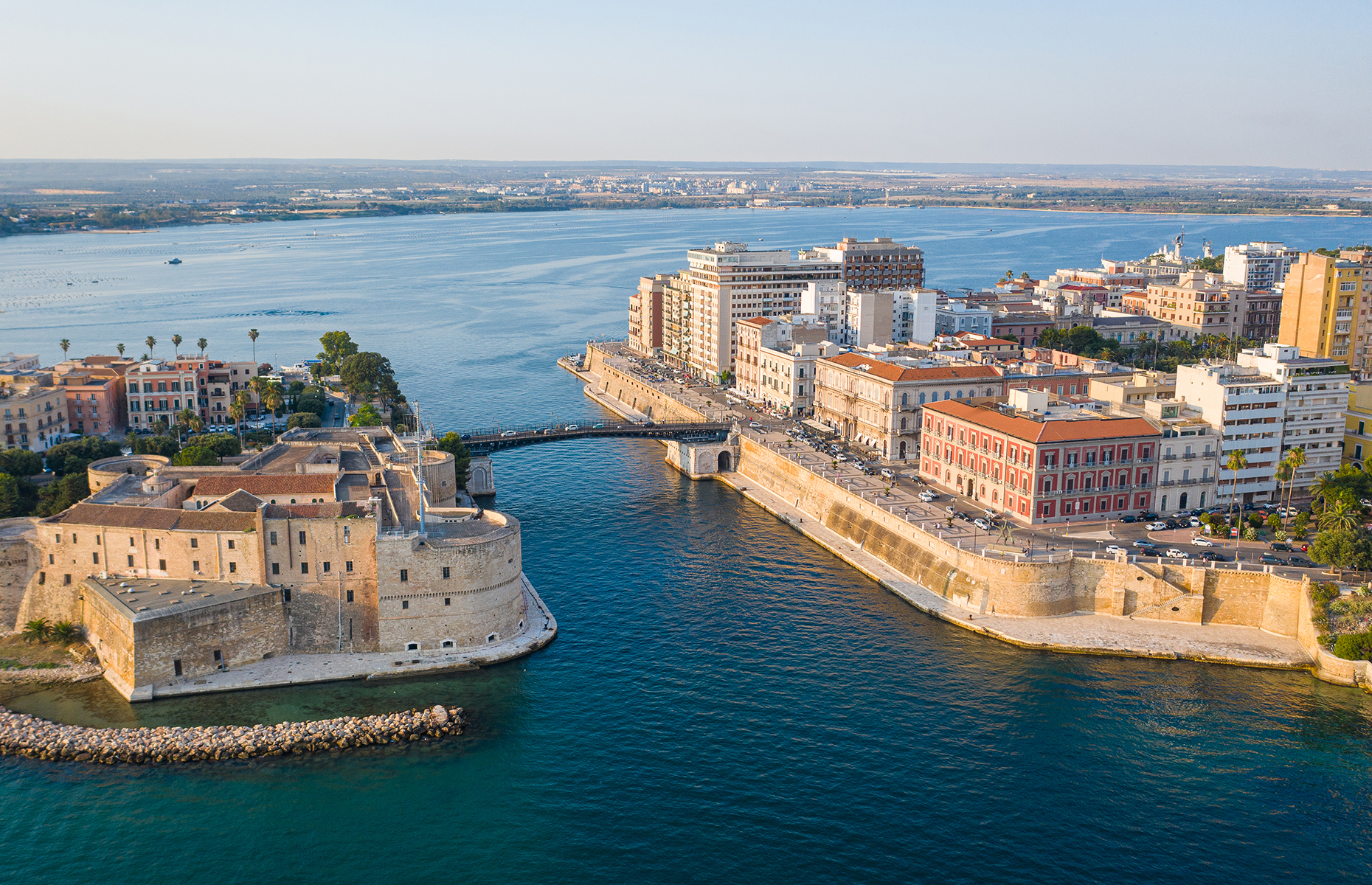 photovideoworld/Shutterstock
photovideoworld/Shutterstock
While Taranto’s modern fortune has been built on its huge commercial and military port, traditional fishing is still in the city's DNA and mussels are an important ingredient of the cuisine. Taratine ones have a distinct flavour thanks to the special salinity of the Little Sea and the city’s restaurants serve them in a variety of ways, such as baked with rice and potatoes, mixed with tubettini pasta or cooked up ‘alla puppitegna’, with garlic, olive oil and parsley.
Trani
There’s a sophistication and slow pace to the fishing town of Trani, known as ‘The Pearl of Puglia’. Basilica Catedral de San Nicolás Peregrino is one of the finest in Italy, set dramatically on the seafront. It's built from pinkish-white local stone with a 194-foot (59m) bell tower you can climb, while the bones of its namesake, St Nicholas the Pilgrim, are kept in the crypt.
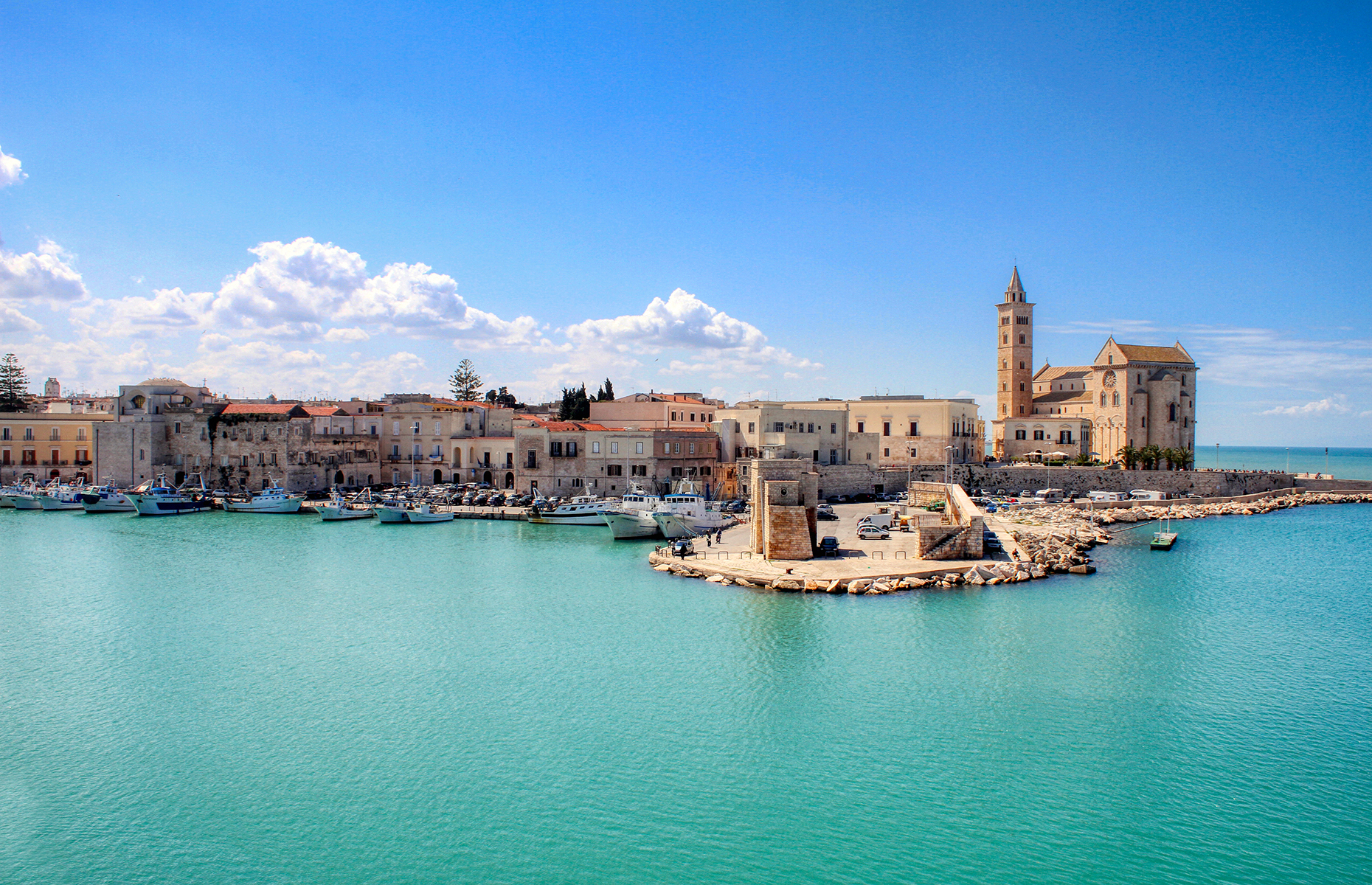 Massimo Todaro/Shutterstock
Massimo Todaro/Shutterstock
The cathedral is a short walk from 13th-century Castello di Trani and Sinagoga Scolanova, one of two remaining synagogues in the ancient Jewish quarter of Giudecca Tranese. After the Jews were expelled in 1510, it was converted to a Christian church but abandoned by the mid-20th century. It has since been deconsecrated and returned to a Jewish place of worship, which offers tours.
Later, relax in the smart bars and eateries that line the marina or walk the promenade that leads to you Villa Comunale, a charming public park overlooking the sea.
READ MORE: Now discover more of Italy's most beautiful towns and villages
Lead image: Balate Dorin/Shutterstock
Comments
Be the first to comment
Do you want to comment on this article? You need to be signed in for this feature